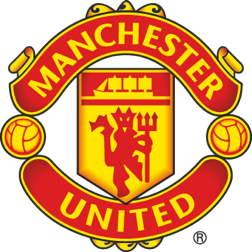Roy Keane: An Irish icon
To play for Manchester United is an achievement in itself. The Kitemark of excellence, a thrill experienced by just a handful of players in a generation.
But to be a Manchester United player. That’s something entirely different again.
It’s not a quality defined purely by the yardstick of appearances, goals or trophies, but by aura – drive, hunger, attitude, the will, or perhaps an insatiable need, to win. And then win again.
It’s found in all the United greats, past and present, from sepia-tinged heroes to sons of the Technicolor age: from Billy Meredith and Joe Spence, through Duncan Edwards, Bobby Charlton and the Busby Babes, to Denis Law, George Best, Ryan Giggs, Eric Cantona and beyond.
Nowhere, arguably, has that flame burned more brightly than in the soul of Roy Keane.
This is why we all loved Keano!
Roy Keane became one of the best players of his generation and perhaps the greatest United captain...
Icon and iconoclast, it is now over a quarter of a century since he first pulled on a red shirt. Between August 1993’s initial glimpse of him in action at Old Trafford – scoring twice in a 3-0 home debut against Sheffield United – and 2005’s sudden departure (even that with the benefit of hindsight now seems somehow inevitable), Keane in essence was, or certainly came to represent, Manchester United in the Ferguson era. The living embodiment of the hopes, dreams and demands of manager, club and fans, all wrapped up in 5ft 11 inches of steely sinew.
Complex and complicated, driven by demons and bouts of self-doubt, Keane’s inspirational, talismanic displays were often worth a goal start – even when two goals down. On an unforgettable April 1999 night in Turin, with United’s Treble dream apparently shredded, 2-0 and 3-1 down on aggregate after 11 minutes he threw a shroud over Juventus’ Champions League hopes, dragging his team-mates back from the brink for a final he knew he’d have to miss having picked up a yellow card. That was Roy Keane. This is Roy’s story...
It wasn’t immediately obvious, to the wider world at least, that Roy was a bit special. Though clearly talented, with strong sporting genes on either side of the family, the young Roy Keane was considered a lightweight by football’s fortune-tellers. Pictures of him in his – admittedly all- conquering – youth-team days show a scrawny kid, one for who lack of inches looked to be critical when mixing it with the bigger boys.
A succession of knockbacks and overlooks might have done for some, but they make them strong in Cork. “A superiority complex is the mark of a sound Corkman,” he later observed.
When his mates chose Mayfield – the suburb of his birth – as their juvenile theatre of dreams, he instead plumped for the seven-mile round trip to renowned Rockmount AFC, where his uncles had played. Not for the last time was he taken to task for the boldness of his decision-making – those local encounters possessed an edge he would bottle for bigger battles on grander stages.
Plugging away at his game, spurred on to escape the grim economic backdrop faced by Irish teenagers at the fag-end of the ’80s, Keane, by now semi-pro at Cobh Ramblers in the National League of Ireland’s second tier, eventually alerted the attentions of Nottingham Forest for a trial.
A friendly, albeit at a deserted Tranmere Rovers ground, was an opportunity not to be passed up. “I’d learned the trick of making the atmosphere in my head,” he later recalled of the game that landed him a contract at Forest.
Where his role model growing up as a Spurs fan had once been the suave and sophisticated Glenn Hoddle, Keane was now in thrall to the man he’d end up replacing in the affections of the Stretford End, Manchester United’s Bryan Robson. For Keane, Robson was proof positive that “you could be a great player without doing tricks”.
As Alex Ferguson, fresh from his first title triumph in 1992/93, cast about for players who could drive the club on with a shared desire to build something concrete and lasting, it was no shock that he turned to Keane. The standout performer in a relegated Forest side – voted fans’ player of the year – it took a British transfer-record £3.75million to secure his services from under the noses of Blackburn Rovers and, not for the first (or last time), a furious Kenny Dalglish. This, Ferguson noted, was a player with the chutzpah to put Robson on his backside when United met Forest. Reputations didn’t seem to faze him.
Keane’s family were all Reds. This was a no-brainer. It was also the start of an education to be hungrily devoured. Everything about Old Trafford spoke of greatness to him – the history, the expectations on those who wore the shirt. His first season – “a young player’s dream – learning what real attitude was, as opposed to mouthing off and posing” – ended with a glorious Double, personal highlights among 54 appearances and eight goals including a post-Galatasaray last-gasp winner in November’s 3-2 derby comeback at Maine Road, enough in itself to secure beers to eternity in M16. As Bryan Robson, his hero and mentor bowed out, it was clear the torch had been passed safely on.
Top 10 Irish Reds
GalleryAhead of Sunday's match in Dublin, we count down our leading appearance makers from Ireland.
Perhaps the thing that so set Keane apart was a refusal to accept second best once first was tasted, and the abiding notion that seeking excuses for failure was craven at best, and cowardice at worst. He’d hated that at Forest, where the waning powers of Brian Clough became the focal point for those he felt should have looked closer to home. “As always in dressing rooms, the last thing people did was look at themselves and accept responsibility for their own failings,” he observed in his autobiography.
At United the right to win was earned by hard yards – you got on the front foot and that was where you stayed. That mid-’90s Reds side – the apex, at least in terms of goal gluts, a 9-0 beasting of hapless Ipswich Town, with Keane on target – was a staggering roll call of names and talents, a who’s who of modern talent. Though ‘94’s Double-winners missed out on retaining the title to Blackburn, they were back – as was a rehabilitated, post kung- fu Cantona – for a repeat Double dose in 1995/96.
Keane’s role – or at least the initial expectations of him as an out-and-out box-to-box type – had changed with such an armoury of attacking options, now bolstered by the shock of the new. His goals dried up to some extent as he became more of a link between attack and defence, snuffing out threats, imposing United’s will on wilting opponents. Always there, ever-dependable, a one-man wrecking ball. “My job was to dominate the midfield, to break opponents’ hearts and minds,” he said of the double Double season.
The physicality of his toil exacted a personal price. 1996/97 – a season in which he inked a new four-year deal at the start, and was handed the armband by the end, was disrupted by injury, as was 1997/98. In September of that campaign he ruptured his cruciate ligament in a challenge with Leeds’ Alf-Inge Haaland – a name that would enter his black book.
The season by which all others must be judged – 1998/99, the hoisting of Premier League, FA Cup and Champions League – was marred by the bittersweet, at least personally, victory in Turin that aligned the planets for an unprecedented Treble. Keane’s header, a gamble to the near post to flick home and give the Reds a way back in, came in a personal powerhouse performance Ferguson was swift to acclaim as the best of his time. Every blade of grass bent to Keane’s will that night.
Trophies followed, including the Football Writers’ Player of the Year for 2000, as did more injuries, but his singular presence sucked controversy in like a magnet. Sensationally axing himself from the Irish 2002 World Cup squad in a later-vindicated critique of tournament preparations – or lack of them – and dogged by the fallout from the lurid autobiographical details of exacting revenge on Haaland, Keane was every hack’s go-to-guy for a back-page lead. The 2002/03 season, in which he underwent a hip operation while serving a six-game ban, would be the last of his seven title triumphs, to go with four FA Cup winner’s medals and an Intercontinental Cup success, courtesy of his solitary strike against Palmeiras.
"See you out there..."
Watch the famous moment Keano clashed with his adversary Patrick Vieira in the Highbury tunnel, back in 2005...
UNFORGETTABLE FIRE
Keane left United in November 2005 by mutual consent – the last of his 480 appearances (with 51 goals) having come against Liverpool in September, a game in which he suffered a broken foot. The parting was swift, sad and expedited by an unbroadcast interview, but who had honestly expected a firework-free farewell? That was that. So it seemed. As it turned out, his testimonial at Old Trafford against Celtic in May 2006 – a record crowd of 69,591 for a benefit game – ended up being his final 90 minutes of football, injury finally getting the better of him after just 13 games at Parkhead. They came from far and wide – young and old, many with nowhere to stay, all desperate to be there, to pay their respects one final time to Keane 16. Even his shirt matched the Old Trafford postcode. He played a half for each side that night – somehow, you expected to see two of him out there, one tackling the other.
If you close your eyes you can still see him. There he is. Arsenal away. Highbury, February 2005.
A packed tunnel. Showtime. Nostrils flared wider than any Madchester hipster’s kecks. On one. Mad for it. Kamikaze Keane. “I’ll see you out there,” he says, chillingly, to his midfield nemesis Patrick Vieira. United, of course, win 4-2.
There are many stars in United’s galaxy. There is only one Keano. A one-man constellation, raging brighter than a thousand suns. An unforgettable fire.
Reading this in our app? If not, you might miss some exclusive features not found on ManUtd.com. Download the Official App now.




